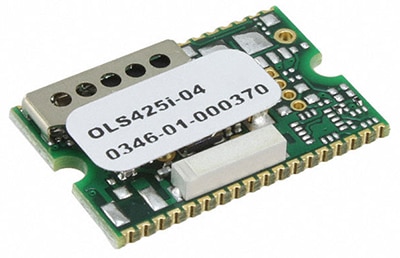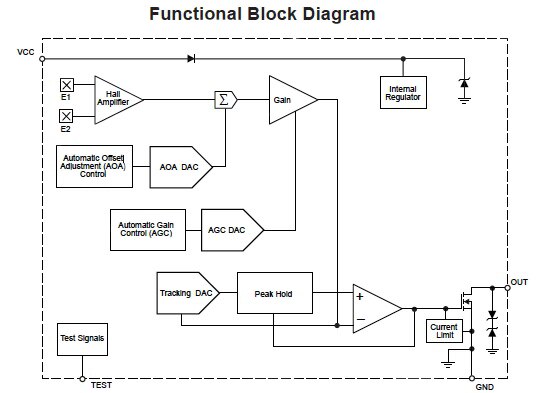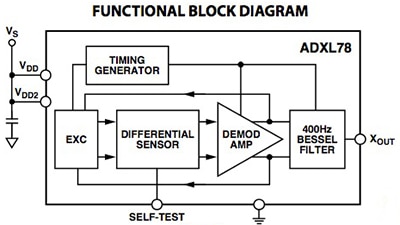Sensing in the IoT Era
投稿人:电子产品
2014-07-23
What is missing from the Internet of Things (IoT) equation? We are. The IoT reaches well past human involvement, connecting (at least initially) to both individual machines and to other machines it must communicate with.
This machine-to-machine (M2M) interaction is quite a departure from human-to-machine communications. Simply put, M2M in an IoT context works when a remote sensor gathers data and wirelessly transmits that data to a network, where it is then routed through the Internet to a server. The sensor network data, which is often real-time data (as in the case of security cameras, monitors, and meters), must then be quickly and efficiently analyzed by specialized software and used for action. This last item—action—is an important enabler since sensor-based IoT networks are designed not only to sense and report, but to sense and act.
Typically, sensors are placed in strategic locations that detect or measure and then send real-time data to a wireless network connected to the Internet. The data streams are then monitored and analyzed. In M2M systems, not only can the sensors provide alerts when anomalies take place, they can communicate to other machines to actually take over a process, so that a change in temperature or pressure, for example, can be initiated.
As the Internet provides a wealth of new possibilities in analytics, automation, and in the gathering and use of data, it is easy to see why M2M communications and the IoT are exploding. With advanced remote and highly sensitive and accurate sensors, development of new iterations of wireless network protocols and increased computing capability, deploying an IoT application now makes sense across many industries.
Example applications
IoT M2M applications include utility companies that use it to harvest energy and even to bill customers. When harvesting oil and gas, sensors detect pressure, flow rates, fuel levels, temperature, and the computer providing analysis and control can adjust the equipment involved for efficiency, safety, and more.
In traffic-control systems, sensors monitor traffic volume and speed, relaying this information to computers that, in turn, use specialized software to control such devices as lights and informational signs. Based on incoming data, software also can manipulate traffic control devices, maximizing traffic flow and easing congestion.
Business uses are plentiful and include inventory tracking and security, while medical applications include monitoring and actually correcting anomalies—as in the case of delivering a charge to a heart monitor to automatically correct heart rhythm—all without human intervention, as the devices are communicating to each other from one end of the network to the other.
The technologies of Internet of Things will encompass sensors, wireless mobile communication, embedded systems and Cloud computing. Let’s now look at some sensors and associated connectivity devices that are well-suited for M2M IoT applications:
Bluetooth low energy (BLE, aka Bluetooth 4.0) will be important in low-power, low-cost, small-size devices. The connectBlue cB-OLP425 is a Bluetooth low-energy serial port module with a unique set of features and functionality that provides a complete turnkey solution.
The cB-OLP425 can either be delivered with digital and analog GPIOs or complete with battery holder, temperature sensor, and 3-axis motion sensor/accelerometer. Using an IAR Embedded Workbench, the customer embeds their own software, such as Bluetooth low energy profiles/services/attributes and customer applications such as machine/device access and asset management, data conversion, data acquisition, logic and more into the module.

Figure 1: The ConnectBlue cB-OLP425 is delivered with digital and analog GPIOs or complete with battery holder, temperature sensor, and 3-axis motion sensor/accelerometer.
Low-energy consumption is achieved by the BLE protocol and is characterized by short and very rapid radio activity combined with long sleep times. During radio activity and data processing, the unit consumes approximately the same amount of energy as a classic Bluetooth application. The device is compliant with EMC, safety, and medical standards and is fully Bluetooth qualified and radio-type approved for U.S., Europe, Japan, and Canada.
Measurement Specialties’ high-accuracy HTU21D Digital Humidity Sensor directly interfaces with a microcontroller since both the humidity and temperature sensor modules have digital outputs. The sensor is housed in a 32 mm x 3 mm x 0 .9 mm DFN package. It has a typical accuracy of plus/minus 2 percent and features an I²C digital interface. The device has selectable resolution for relative humidity and temperature, features low-sleep-mode current consumption (0.02 µA typ.) and, with a typical power dissipation of 2.7 µA, it is well suited for battery-powered applications. Its humidity response time (63 percent of signal) is 5 s and its temperature response time (63 percent of signal) is 10 s (lower resolution results in a faster response time). Users can expect data transfer rates up to 400 kHZ without external components. Engineers can find a helpful Product Training Module for the part on the DigiKey website.
Applications include automotive, industrial, medical, and home appliances, areas where M2M is blossoming. The device is compatible with automatized assembly processes and includes individual marking for stringent traceability requirements.
Allegro's A1468 optimized Hall-Effect sensing IC provides a user-friendly solution for digital ring-magnet sensing, or when coupled with a magnet, ferromagnetic target sensing, in three-wire applications. The device is ideally suited to obtaining speed and duty cycle information in ring-magnet-based speed, position, and timing applications, such as in speedometers.

Figure 2: Need to measure and control speed? The Allegro A1468 is easily implemented.
Housed in a small device package, the device can be easily assembled into applications that have a wide variety of target shapes and sizes. The integrated circuit incorporates dual Hall-Effect elements with a 2.2 mm spacing and signal processing that switches in response to differential magnetic signals created by ring-magnet poles. The A1468 is highly accurate and contains sophisticated digital circuitry to reduce system offsets, to calibrate the gain for air gap, independent switch points, and to achieve true zero-speed operation through a peak-detecting algorithm. The device is capable of providing digital information that is representative of the magnetic features on a rotating target.
The Analog Devices ADXL78 is a low-power and complete single-axis accelerometer with signal-conditioned-voltage outputs on a single monolithic IC. This product measures acceleration with a full-scale range of ±35 g, ±50 g, or ±70 g (minimum). It also measures both dynamic acceleration (vibration) and static acceleration (gravity).

Figure 3: The ADXL78 measures vibration and acceleration, important in automotive and industrial apps.
Applications include vibration monitoring and control, vehicle collision sensing, and shock detection, targeting important industrial and automotive segments.
One of the most compelling aspects of M2M and the IoT is the expectation of creating new possibilities in data gathering, automation, and analysis. As machines begin to open up a dialogue with each other, the sensors that provide data that will be transmitted to and analyzed by computing resources on the Internet or in the Cloud must be designed with the requirements of IoT in mind. This article introduced the concept of IoT, its basic properties and characteristics, and discussed some example sensors well-suited for these purposes.
For more information about the parts discussed here, use the links provided to access product information pages on the DigiKey website.
免责声明:各个作者和/或论坛参与者在本网站发表的观点、看法和意见不代表 DigiKey 的观点、看法和意见,也不代表 DigiKey 官方政策。






